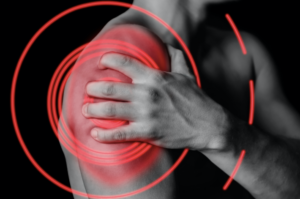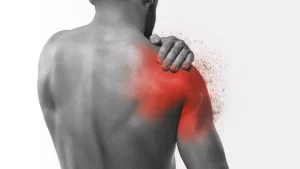 For athletes that we rehab here at CardioFlex Therapy, the most common sports injuries that we diagnose are Shoulder injuries. Shoulder Sports Injuries are frequently caused by athletic activities that involve excessive, repetitive, and overhead motions. Some sports that involve these movements are swimming, tennis, baseball, basketball, volleyball, racquetball, mixed martial arts, wrestling, gymnastics, cheerleading, and weightlifting.
For athletes that we rehab here at CardioFlex Therapy, the most common sports injuries that we diagnose are Shoulder injuries. Shoulder Sports Injuries are frequently caused by athletic activities that involve excessive, repetitive, and overhead motions. Some sports that involve these movements are swimming, tennis, baseball, basketball, volleyball, racquetball, mixed martial arts, wrestling, gymnastics, cheerleading, and weightlifting.
But most shoulder injuries that occur are not limited to athletes, or sporting accidents only. Most people hurt their shoulders doing day to day tasks or mundane activities, often times from the comfort of their own home.
Since the shoulder joint is the second worst lever system in the body due to the length of the arm, then it is more likely to be injured than other joints. Additionally, the shoulder is relatively small compared to the hip (worst level system in body), so it doesn’t have the musculature to protect it from outside forces. If a person tries to lift or hold a heavy object with an outstretched arm, the shoulder has very little strength in this position, will usually take the brunt of the forces, and therefore be easily injured.
The shoulder is one of the most mobile joints in the body, but it is also an unstable joint because of its nearly unlimited range of motion. Because the ball of the upper arm is larger than the socket of the shoulder, it allows for this tremendous range of motion (ROM), but also creates a greater risk of injury. The shoulder joint is supported by soft tissues like the Rotator Cuff muscles, the Labrum, and the Biceps Tendon, which are often damaged when the shoulder is hurt.

When the shoulder is injured, simple stretches or protocols such as icing and applying heat can help relieve pain and prevent it from getting worse. The shoulder is the only joint in the body that can become “frozen” if it’s not being moved or utilized. If left untreated, shoulder pain can increase over time, becoming unbearable and preventing tasks of daily living. A frozen shoulder will not unfreeze itself unless properly treated by a licensed Physical Therapist. A PT can help patients to recover faster and work with them individually to relieve shoulder pain.
In most states across the country, patients can see a Physical Therapist first without having to visit a Dr. to get a prescription. In Florida, patients can visit a Physical Therapist for up to 30 days without a Doctor’s Script. The PT may choose to apply several modalities, such as Ultrasound, Cold Laser, Iontophoresis, Electrical Stimulation, Moist Heat, Ice, Kinesiotaping, etc. Also, a series of different stretches and resistance exercises with a PT is offered until most of the motion has returned. No matter how a shoulder injury occurs, everyone wants the same result: a fast recovery.
For more info visit: www.cardioflextherapy.com

About the Author
Terry Abrams is the President & Director of Physical Therapy for CardioFlex Therapy, a start-up company founded in 2005 in Fort Lauderdale, FL. Delivering both Physical Therapy & Occupational Therapy, CardioFlex Therapy’s Outpatient Clinic is centrally located in Davie, FL serving the towns of Cooper City, Weston, Pembroke Pines, Plantation, Southwest Ranches, Hollywood, Miramar, Sunrise, & Fort Lauderdale. For Home Physical Therapy, CardioFlex sends its therapists to homes located in Broward, Dade, & Palm Beach counties.
